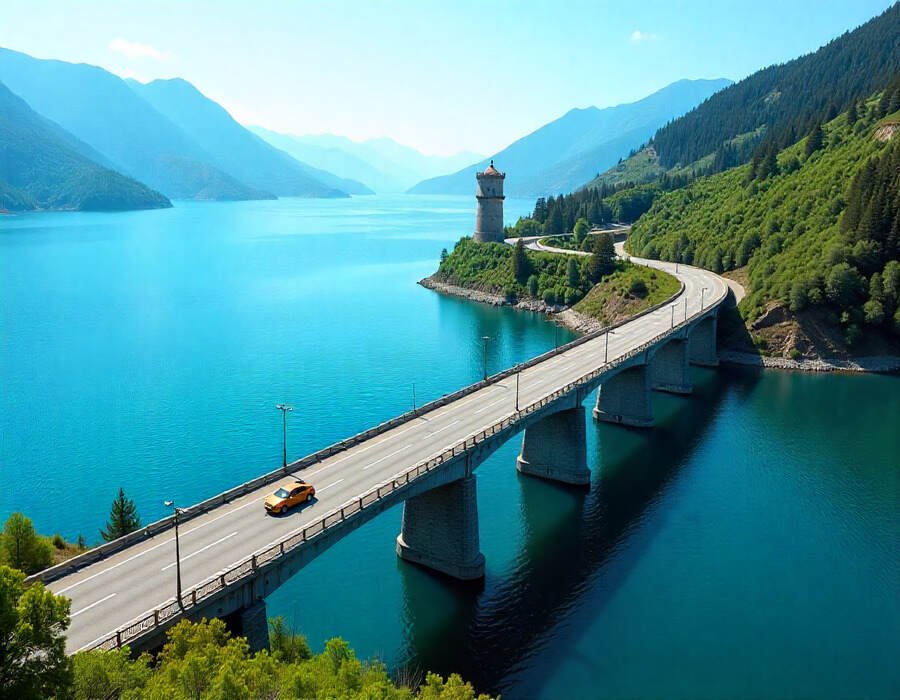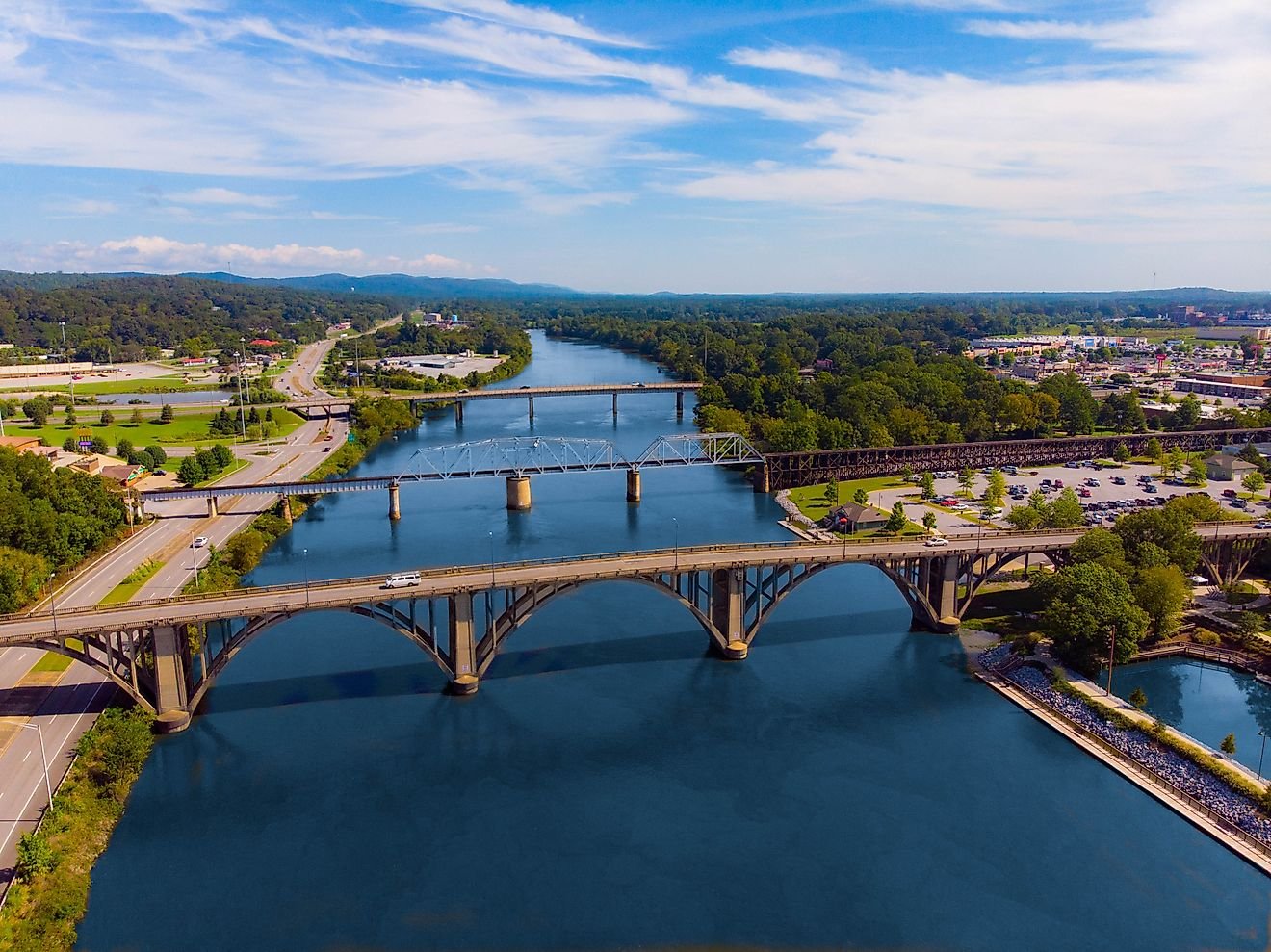Travel Journals
Scotland’s Captivates Road Trippers Worldwide as the Legendary North Coast 500 is Celebrated as the Most Spectacular and Awe Inspiring Scenic Journey in the United Kingdom

Published on
August 7, 2025 |
By: TTW News Desk
Scotland’s world-renowned North Coast 500 has captured the imagination of travelers across the globe, earning its title as the most breathtaking and unmissable road trip experience in the United Kingdom. Stretching over 500 miles through the untamed beauty of the Scottish Highlands, this legendary route offers an unforgettable journey through rugged coastlines, shimmering lochs, ancient castles, and remote fishing villages that seem frozen in time. Its dramatic scenery, cultural richness, and raw natural charm have made it a dream destination for adventure seekers and nature lovers alike. Launched in 2015 to boost regional tourism, the NC500 has since skyrocketed in global popularity, becoming a viral sensation for its photogenic landscapes and immersive driving experience. As social media fuels its rise and Gen Z travelers increasingly seek off-the-beaten-path destinations, the route now stands as a symbol of Scotland’s wild elegance—drawing thousands to experience a journey that’s as visually stunning as it is soul-stirring.
Scotland’s Legendary NC500 Named the UK’s Most Beautiful Road Trip Route Amid Rising Challenges
Scotland’s North Coast 500 (NC500), a breathtaking loop around the northern tip of the country, has been officially crowned the UK’s most scenic road trip, offering travelers a striking blend of untamed natural beauty, cultural heritage, and coastal serenity. As its popularity surges, however, concerns are growing over the delicate balance between tourism growth and environmental preservation.
The accolade comes from new research highlighting the UK’s top five most visually spectacular driving routes. Leading the list is the NC500, a 516-mile coastal circuit that showcases some of the Scottish Highlands’ most iconic landscapes—from wind-swept cliffs and serene lochs to heather-covered hills and medieval castles.
The NC500 Experience
Launched in 2015 by the North Highland Initiative as a strategic tourism project, the NC500 was designed to bring new life to remote parts of the Highlands. Prior to its branding, these roads already existed but lacked the cohesive identity that now draws global attention. Since its creation, the NC500 has been frequently compared to the legendary Route 66 in the United States, and it has quickly earned a reputation as one of the greatest drives in the world.
Winding through dramatic coastal scenery and isolated mountain ranges, the route connects Inverness to a sequence of charming destinations such as Applecross, Durness, John O’Groats, and Ullapool. Along the way, travelers are treated to golden beaches, hidden waterfalls, peaceful fishing villages, and stretches of road with barely another car in sight.
Typically completed in about a week, the journey encourages travelers to take their time—stopping for hikes, wildlife spotting, and locally sourced meals at traditional pubs and inns scattered throughout the Highlands. For many, it’s not just a drive—it’s a soul-stirring escape into nature.
A Generation Drawn to the Wild
New travel insights reveal that 71% of Generation Z travelers plan to visit destinations that have gone viral online. The NC500 fits that bill perfectly, with drone shots of hairpin turns, rugged cliffs, and white-sand beaches flooding social media feeds and travel blogs. This new wave of tourism is helping support local economies, with increased business for small accommodations, restaurants, and guide services across the Highlands.
However, with increased fame comes added strain. The narrow, winding roads of the Highlands were never designed for high volumes of traffic. What was once a remote escape now experiences peak-season congestion, prompting growing concern among locals and conservationists.
Rising Impact of Overtourism
As more campervans and rental cars crowd the route, pressure on infrastructure and the environment has become increasingly apparent. Local communities, while benefiting economically, have voiced frustration over irresponsible visitor behavior—such as wild camping in inappropriate areas, improper waste disposal, and inconsiderate parking that disrupts local life.
Environmental degradation is another issue that’s gaining attention. From overused trails to litter along scenic viewpoints, the route’s growing popularity threatens the very beauty that makes it so captivating.
Social media has amplified both the allure and the drawbacks. Viral stories and posts highlight both awe-inspiring images and unfortunate incidents. In one reported case, a group of travelers parked their campervans in a graveyard car park, blocking access for a funeral—a stark reminder of the importance of respect and responsibility when exploring rural destinations.
Other Scenic Drives Across the UK
While the NC500 claims the top spot, the UK is home to several other awe-inspiring driving routes, each offering a different slice of natural beauty and regional charm.
In Somerset, the Cheddar Gorge drive winds through towering limestone cliffs and past ancient caves, providing a dramatic contrast to the rolling hills of the English countryside.
Up north in Cumbria, Kirkstone Pass carves through the Lake District’s fells, revealing misty peaks and mirror-like lakes that have inspired poets and painters for centuries.
The Atlantic Highway, stretching along the coastlines of Cornwall and Devon, offers surfers and sunseekers sweeping ocean views, picturesque villages, and rugged cliffs that plunge into the sea.
Finally, Snake Pass in the Peak District cuts through the Pennines, offering a serpentine route through rolling moorlands and heather fields that transform into vibrant carpets of purple each summer.
Scotland’s iconic North Coast 500 has become the UK’s most breathtaking road trip, offering over 500 miles of wild Highlands beauty, ancient castles, and coastal magic. Its growing global fame makes it a must-experience journey for adventure seekers and nature lovers.
Sustainable Future for the NC500
Preserving the North Coast 500’s beauty and charm is no longer just a task for local authorities—it’s a collective responsibility. Sustainable tourism strategies are now in development, aimed at encouraging off-season travel, investing in better facilities, and educating travelers on how to minimize their impact.
Visitors are being encouraged to plan ahead, book accommodations in advance, and follow designated parking rules. There’s also a push for eco-conscious behavior—such as leaving no trace, supporting local businesses, and respecting the pace and culture of rural Highland communities.
In the long run, responsible tourism could ensure that the NC500 remains a source of pride for Scotland and a bucket-list journey for travelers worldwide—without compromising the peace, natural beauty, and cultural heritage of the region.
Travel Journals
40 years through the lens: A photographer’s Tasmanian journey | The Examiner

Since this date, the darkroom doors have had over 30 photographers go through – Neil Richardson, Peter Aylett, Maria Connors, Matthew Stanley, Will Swan, Craig Sheriff, Michelle Webb, Jeremy Smith, Eddie Safarik, Tim Hughes, Lorisse Dart, Leila Williams, Sarah Rhodes, Simon Tennant, Sharee Smith, Simon Groves, Ben Vos, Glenn Daniels, Mark Jesser, Geoff Robson, Scott Gelston, Rod Thompson, Phillip Biggs and Craig George.
Travel Journals
6 Most Scenic Drives in Alabama

Known as the best state in America for freshwater diversity, Alabama is a nature lover’s paradise. However, unknown to many avid trippers, Alabama also boasts some of the most scenic drives in the country. You will enjoy heart-gripping views at thousands of feet above sea level, then swooping down to take in delicious waterfront views along the state’s white-sand beaches. Some roads cut through dense forests and deep canyons. Meanwhile, others showcase rolling hills, old barns, and other elements of a bygone era. Keep reading to discover the 6 most scenic drives in Alabama.
The Natchez Trace Parkway
Natchez Trace Parkway is a phenomenal drive that spans more than 400 miles and winds through three states, including Mississippi, Alabama, and Tennessee. To a large extent, it follows the “Old Natchez Trace,” a historic artery used by American Indians, slave traders, soldiers, and even future presidents. You only need a minute on the historic parkway, and you will immediately appreciate why it is ranked as one of America’s 10 best biking roads. The Alabama segment spans slightly more than 30 miles in the state’s northwest corner, but its visual effect is profound in both scope and intensity. It starts on the Mississippi border, a few miles southwest of Cherokee, and winds through to the Tennessee border near Stewartville. Highlights include Colbert Ferry Park, named for Chickasaw George Colbert, and Freedom Hills Overlook, which features a steep, quarter-mile trail that leads to Alabama’s highest point on the parkway.
Alabama State Route 65
There are road trips that leave you yawning at the dull expanse of sameness. Others give a sense of rural calm, especially as they feature curvy, tree-lined segments and offer tasty views that set the heart purring with joy and anticipation. Alabama State Route 65 (not to be confused with Interstate 65) is curvy but incredibly peaceful. Think of old barns, historic homesteads, and weathered farm structures. People skip it for long drives and big names, but this 27-mile eye candy is such a revelation, notably for the fact that it cuts through the entire length of the Paint Rock Valley, described as “the Little Sister to Virginia’s Shenandoah.” The route starts from near the slow-paced town of Gurley and leaps through the mountainous regions of northeastern Alabama to Francisco near the Tennessee border. Roy B. Whitaker Paint Rock River Preserve in Paint Rock has nice, flat trails to explore, while Curly Putman Park in Princeton is photo-worthy in every direction.
Selma To Tuskegee Through Montgomery
A significant portion of the route from Selma to Tuskegee through Montgomery is the historic Selma to Montgomery National Historic Trail, which commemorates one of the most consequential moments in the history of the U.S. Civil Rights Movement. A confrontation between peaceful protestors and law enforcement officers on the Edmund Pettus Bridge pricked the conscience of the nation and sent sympathetic shockwaves across the globe. The route’s starting point is the Brown Chapel African Methodist Episcopal (A.M.E.) Church in Selma, while the Alabama State Capitol marks the endpoint on the other side. An extension to the vibrant college town of Tuskegee winds through peaceful rolling countryside tastefully punctuated with forested stretches. Highlights include the Edmund Pettus Bridge, the Brown Chapel African Methodist Episcopal (A.M.E.) Church, where a statue of Martin Luther King Jr. stands, and the Lowndes Interpretive Center (White Hall), a nostalgic spot dedicated to participants of the historic march.
Talladega Scenic Drive
Talladega Scenic Drive, also known as State Route 281 in Alabama, extends from U.S. Route 78 west of Heflin, a Hallmark-worthy town that serves as the gateway to the Southern Appalachian Mountains, to the intersection of two forest roads in the Talladega National Forest around Adams Gap, about 11 miles northwest of Lineville. It winds through the southernmost extension of the Appalachian Mountains and boasts some of the best vistas in the South, including Cheaha Mountain, the highest point in the state. Rock outcroppings and small rural settlements dot the stretch, sitting as mesmerized witnesses to nature’s incredible grandeur, vastness, and majesty. There are several scenic overlooks to stop and pull over. You can then hide at the Cheaha State Park and explore the jaw-dropping trails around.
Lookout Mountain Parkway
Lookout Mountain Parkway is a two-lane gem that spans approximately 93 miles and effortlessly imprints itself on the minds and memories of those lucky enough to experience its poetic beauty. The parkway starts outside the gates of Gadsden’s Noccalula Falls Park, where a path leads to a photogenic view of Noccalula Falls, a 90-foot waterfall steeped in Native American myth. The park and waterfall are in Gadsden, once Alabama’s second-most important commercial and industrial hub. The Alabama section of the parkway ends at the Georgia-Alabama border near Mentone before crossing into the Peach State. If you find Noccalula impressive, you will find DeSoto Falls, one of the most photographed attractions in Alabama, nothing short of stupendous. A short detour will take you to another unmissable highlight on the Lookout Mountain Parkway: the sandstone cliffs of the Little River Canyon.
Barbour County Governors’ Trail
Barbour County Governors’ Trail has a giveaway name that easily reveals its overarching focus: the Alabama governors who called Barbour County home. The trail features 8 governors, including those with historical significance such as Governor Shorter, a strong secessionist and a co-author of the Confederate constitution. Still, despite its name, the Barbour County Governors’ Trail is not exclusively about governors. You can pass by the Octagon House in Clayton, which served as Union cavalry headquarters during the Civil War years. Alternatively, you can explore the gorgeous Blue Springs State Park, which features several attractions, including a spring-fed swimming pool. The trail begins in Clio and continues northeast through Louisville to downtown Clayton.
The Takeaway
Besides being some of the best stress-relievers out there, road trips are fun, enjoyable, and often come with a euphoric sense of freedom and adventure. Alabama, one of the most diverse states in America, is home to some surprisingly beautiful drives. The best part is that the drives travel the whole gamut: From the flat terrains with shimmering water views to cloud-grazing pathways with panoramic vistas. Depending on your pick, you can also enjoy a big dose of history. Keep in mind that several defining events associated with the Civil Rights Movement played out in Alabama, including the Selma to Montgomery March, making this state perfect for road-trip-loving history buffs.
Travel Journals
5 Key Takeaways for Improving Infrastructure and Range Anxiety
I’ve owned an EV for more than a year. I scored a deal on a 2024 Hyundai Ioniq 5 SEL AWD. I’ve enjoyed the car. I’ve put more than 5,000 all-electric miles on it. I’ve evangelized about how hassle-free EV ownership can be. What I had not done was the most anxiety-inducing part of EV ownership: taking a road trip. Not a really long drive. But a 600-plus-mile round-trip trek with my wife and kids in tow, requiring planning and multiple charging stops. I finally got the chance a few weekends ago, when friends invited us to their cottage in a picturesque part of Northern Michigan best left unmentioned to New Yorkers.
The experiences in this piece are those of the author and in no way mean to suggest that everyone’s experiences will be similar or that infrastructure difficulties will always be this way.
My trip was neither perfect nor painless. But it wasn’t a complete disaster. My family made it home with relationships intact. But my experience proved eye-opening. I’m not quite ready to bail on EVs and buy a hybrid. But I have compiled a few, hopefully helpful thoughts on the infrastructure and what I’ll be looking for when I buy my next EV.
Range Is Important For EVs
This point is obvious. But it’s worth reiterating: the more range your EV has, the less stressful your road trip will be. My threshold for what constitutes “enough” range has increased since I took the road trip. The EPA estimates that my 2024 Hyundai Ioniq 5 SEL will achieve 260 miles of range on a single charge. It’s probably a hair less after a year of ownership. But we can use that for the sake of the argument. Typically, I charge to 80 percent. That gives me a little over 200 miles of range to play with in optimal conditions. I don’t commute. My kids attend school within walking distance of our home. I have a Level 2 home charger. I can get to the airport and almost anywhere in Metro Detroit using less than 50 miles of range, round trip. Range is never an issue.
Road trips are atypical. I charged to 100% before leaving. However, after that first leg, I was left with about 200 miles of range to use between stops when charging to 80% – in theory. The car’s functional range, presuming one doesn’t wish to drain the battery completely, is less than that. For me, double-digits remaining was when the anxiety began creeping in. I started cutting my speed, rationing the air conditioning, and monitoring the delta between the range and distance remaining like a hawk. Hitting my first charging stop with the car showing 30 miles of range left was cutting it closer than I would have liked.
Not everyone can afford a Lucid Air or a Rivian Max Pack. However, even increasing the range from 250 miles to above 300 miles with a vehicle like the front-wheel-drive Chevrolet Equinox EV can reduce anxiety and, potentially, make the difference between needing a second stop or shortening your trip by half an hour to 45 minutes by avoiding it.
2024 Hyundai Ioniq 5 AWD Range Versus Rivals
|
Max EPA Range (AWD) |
Starting MSRP (AWD) |
|
|
2024 Hyundai Ioniq 5 AWD |
260 mi |
$49,350 |
|
2025 Hyundai Ioniq 5 AWD |
290 mi |
$50,150 |
|
2025 Ford Mustang Mach E eAWD |
300 mi |
$40,995 |
|
2025 Tesla Model Y Long Range AWD |
327 mi |
$48,990 |
|
2025 Honda Prologue AWD |
294 mi |
$50,400 |
Range Calculators Are An Underrated Feature
My Ioniq 5 predates the 2025 refresh. The car’s performance is top-notch. However, the software to manage that performance is lacking. The Ioniq 5’s range calculator determines the range with a heavy weight on previous driving. That’s fine during everyday usage. That’s not ideal for a road trip when you go from 100% city driving to less efficient highway cruising.
When I began my drive with a 100% battery charge, my car told me I had 344 miles of range. That estimate presumed I would continue city driving in warm weather and traveling more than four miles per kWh. I knew the car would not achieve that figure. But I figured 216 miles to the first charging stop would be a safe bet. We made it with 30 miles remaining after 220 miles.
My anxiety stemmed not so much from the range but from not being able to trust what the car was telling me. The delta between my remaining range and the charging stop held steady for about the first hour or so of the drive. Then it began plummeting, particularly when the remaining range fell below 200 miles. I departed our food stop with 121 miles of range and 67 miles to the charger. That delta dipped to just 30 miles by the time I parked at the charger.
The ability to plan ahead is only as good as your data. I would have loved a feature like the integrated Google Maps in GM EVs that can map you to your destination, factor in the charging stop, and provide a relatively accurate estimate of how much battery life would be left when you arrive.
Tesla Supercharger Access Wasn’t A Game Changer
One of the reasons I felt confident embarking on my first EV road trip was Tesla Supercharger access. Hyundai sent me a free NACS adapter for my Ioniq 5. Stations are well-dispersed and maintained. Stations have numerous chargers. It felt like that network would be a reliable security blanket, making road tripping easier. It wasn’t.
Adding Tesla Supercharger access didn’t add places for me to stop. Other fast-charging providers in Michigan are, for the most part, not filling the gaps. Companies like Electrify America are simply placing their chargers adjacent to Tesla Superchargers. In that scenario, there’s no reason to use Tesla’s charging. My Ioniq 5 can charge more than twice as fast on a 350 kW charger. And paying by tapping my credit card was easier.
The one time I needed Tesla Superchargers to come through it became a near nightmare. I pulled into Bay City, MI, with about 80 miles left to travel and about 95 miles to go. It was 96 degrees. I had not noticed on the PlugShare app before leaving that all Electrify America chargers there were out of service. Tesla’s eight supercharging bays were open for use. The trouble is that traffic was heavy. Most EVs on the road are Teslas. And all the bays were full.
Ford’s Blue Oval Network Was My Salvation
I waited in line for a few minutes before a bay opened up. I pulled in. The problem was that Tesla’s cord was too short. It only reaches Tesla ports on the left rear of the vehicle. The Ioniq 5 has its charger on the right side. My options were to wait by the one bay I could angle my car into or wait for two consecutive spaces to open up and claim them both. I did find salvation, but it came at a Blue Oval Network charger at a Ford dealer a mile away.
Better Infrastructure Around The EV Charger Could Make A Huge Difference
Charging time is important. But it’s only part of the time you spend off the highway. The distance to the charger and poor infrastructure around it can increase the stop time. Most EV fast chargers in Michigan reside at large big-box retailers like Meijer (or “Meijer’s” if you’re a Michigander). That’s good in a sense: Meijer stores are already strategically located at hubs. But they are typically off the main drag, around a mile or two from the highway. Driving to and fro can add three to five minutes to the stop length on both ends.
Having the charger at Meijer is great for bathroom access and potential grocery shopping. But they are typically located away from the restaurants and fast food outlets just off the highway. So, you can’t just get lunch in the dead time while charging. A typical stop could look like this: drive a half-mile east, wait in a drive-thru line for 10-15 minutes, then drive 2.5 miles back across the highway in the opposite direction (five or so minutes) to reach the charger. Spend 15-20 minutes charging. Spend another 3-5 minutes driving back to the highway.
Real time spent can be upwards of 40 minutes. Food near the chargers or chargers at food outlets could significantly reduce that time. And the time savings may even be worth having to scarf down $13 Elon dogs.
When EV Infrastructure Worked, It Was Great
But for the aforementioned snafu in Bay City, my charging experiences were pleasant. My Ioniq 5 charged like a beast on Electrify America chargers, reaching a peak of 220 kW. Going from 13% to 80% took a little over 20 minutes.
I also found a bank of 160 kW fast chargers at City Hall in Cheboygan, MI. None of them were in use on a Saturday night. I left the car on the charger while we got the kids ice cream and stopped for an outdoor beer. It was 100 percent full when I returned an hour or so later. It also allows me to tap my card to pay, rather than using an app. The extra charging allowed us to take a detour to a lighthouse on the way home.
-

 Brand Stories3 weeks ago
Brand Stories3 weeks agoBloom Hotels: A Modern Vision of Hospitality Redefining Travel
-

 Brand Stories2 weeks ago
Brand Stories2 weeks agoCheQin.ai sets a new standard for hotel booking with its AI capabilities: empowering travellers to bargain, choose the best, and book with clarity.
-

 Destinations & Things To Do3 weeks ago
Destinations & Things To Do3 weeks agoUntouched Destinations: Stunning Hidden Gems You Must Visit
-

 Destinations & Things To Do2 weeks ago
Destinations & Things To Do2 weeks agoThis Hidden Beach in India Glows at Night-But Only in One Secret Season
-

 AI in Travel3 weeks ago
AI in Travel3 weeks agoAI Travel Revolution: Must-Have Guide to the Best Experience
-

 Brand Stories1 month ago
Brand Stories1 month agoVoice AI Startup ElevenLabs Plans to Add Hubs Around the World
-

 Brand Stories4 weeks ago
Brand Stories4 weeks agoHow Elon Musk’s rogue Grok chatbot became a cautionary AI tale
-

 Brand Stories2 weeks ago
Brand Stories2 weeks agoContactless Hospitality: Why Remote Management Technology Is Key to Seamless Guest Experiences
-

 Asia Travel Pulse1 month ago
Asia Travel Pulse1 month agoLooking For Adventure In Asia? Here Are 7 Epic Destinations You Need To Experience At Least Once – Zee News
-

 AI in Travel1 month ago
AI in Travel1 month ago‘Will AI take my job?’ A trip to a Beijing fortune-telling bar to see what lies ahead | China













You must be logged in to post a comment Login